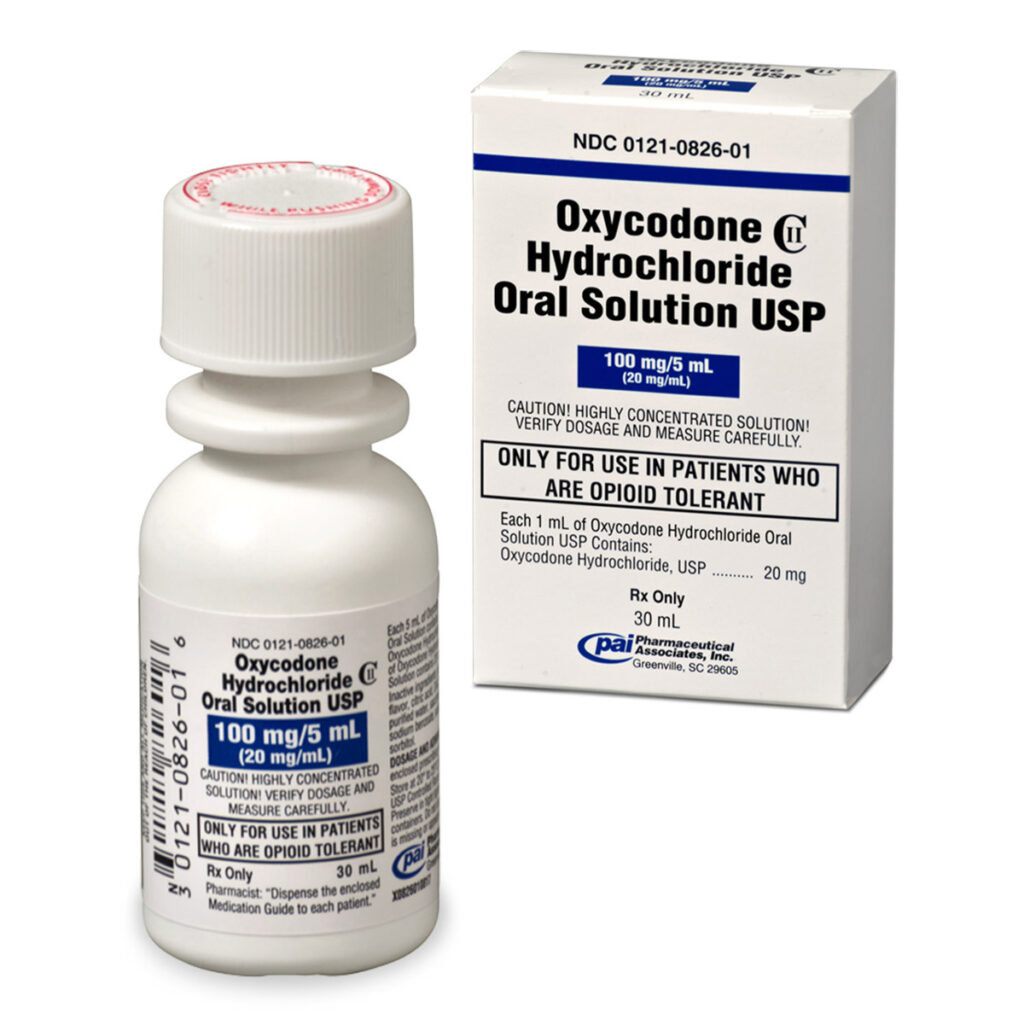Checking Out the Numerous Medical Uses and Impacts of Oxycodone suffering Management
Oxycodone, a powerful opioid analgesic, has long been a keystone in the management of moderate to serious pain. Its effectiveness in reducing numerous sorts of discomfort has made it a crucial device for healthcare service providers. Nevertheless, the intricacies surrounding its clinical usages and results surpass plain pain alleviation. Understanding the elaborate interplay between oxycodone, the body, and the potential effects of its management is essential for both healthcare professionals and people alike. Allow's unwind the complex landscape of oxycodone hurting monitoring to acquire a comprehensive understanding into its energy and impact.

Pain Relief System of Oxycodone
By binding to these receptors, oxycodone alters the understanding of discomfort, leading to a decrease in pain feeling. This activation hinders the release of neurotransmitters included in pain signaling, such as substance P and glutamate, while additionally promoting the launch of inhibitory neurotransmitters like gamma-aminobutyric acid (GABA)
Furthermore, oxycodone not just modulates discomfort assumption however likewise influences emotional responses to pain. The medication can induce feelings of euphoria and relaxation, contributing to its high potential for misuse. Understanding the exact system of oxycodone's activity on the main anxious system is crucial for doctor to optimize its use hurting monitoring while reducing the risks related to its possibility for dependency and misuse.
Kinds Of Discomfort Conditions Dealt With
In the realm of pain administration, various kinds of discomfort problems gain from the targeted analgesic results of drugs such as oxycodone. Oxycodone is commonly prescribed for the treatment of moderate to severe pain, making it an important tool in handling intense discomfort adhering to surgeries, injuries, or clinical procedures. Additionally, oxycodone is utilized in chronic pain conditions such as cancer-related discomfort, neuropathic discomfort, and musculoskeletal discomfort disorders like osteo arthritis or fibromyalgia.
In addition, oxycodone is reliable in handling breakthrough discomfort episodes in clients currently on continuous opioid therapy. Innovation pain describes unexpected, intense flares of pain that occur despite ongoing pain administration. By supplying fast pain alleviation, oxycodone aids improve the lifestyle for people struggling with conditions like cancer cells, where pain control is critical for overall health.
In palliative treatment setups, oxycodone plays an important duty in making sure convenience and dignity for terminally sick patients experiencing severe pain. Its strength and flexibility in dosing make it an important option for tailoring pain management to individual client needs across a range of discomfort problems.
Possible Side Results and Threats
Typically observed in individuals utilizing medicines for pain administration, prospective side impacts and dangers connected with these therapies need cautious factor to consider and surveillance by medical care companies. Oxycodone, a potent opioid frequently recommended for moderate to serious pain, can result in different adverse effects. Common side effects of oxycodone include irregular bowel movements, queasiness, sleepiness, and lightheadedness. These results are frequently manageable but can be bothersome for people. Sometimes, more major negative effects such as respiratory system clinical depression, allergic reactions, and dependence might happen, requiring immediate clinical interest.
Furthermore, the lasting use oxycodone can lead to resistance, where higher doses are needed to attain the exact same level of discomfort relief. This can possibly enhance the threat of overdose and addiction - Buy Oxycodone online. People with a history of material abuse or mental health and wellness problems go to a greater danger of experiencing these unfavorable impacts
Healthcare suppliers must very carefully analyze the risks and benefits of oxycodone therapy for each private client and monitor them carefully to lessen possible negative effects and risks related to its use.
Dosage Guidelines and Administration
Offered the prospective side impacts and risks linked with opioid medicines like oxycodone, healthcare companies should develop clear dose standards and correct management protocols to ensure secure and reliable pain monitoring for patients. The dose of oxycodone must be individualized based on factors such as the person's age, weight, medical background, and the extent of pain.
Healthcare carriers should regularly reassess the person's pain why not try here levels and change the dose as necessary. It is important to keep track of for indicators of opioid misuse or dependancy during therapy. Oxycodone is frequently offered in immediate-release and extended-release formulas, and the application routines vary between both. Patients need to be informed on the correct administration strategies, potential negative effects, and the importance of not surpassing the suggested dosage to stop damaging outcomes.

Person Education And Learning and Tracking
Clients prescribed oxycodone for discomfort monitoring must get extensive education on correct medicine use and must undertake routine monitoring to ensure efficient and safe therapy outcomes. Individual education plays a vital role in the risk-free use oxycodone, as it encourages individuals to recognize the medicine's possible benefits, dangers, and negative effects. Doctor should inform people on the significance of taking oxycodone specifically as prescribed, preventing alcohol and various other main nerves downers, and identifying signs of opioid overdose. Furthermore, people should be notified concerning proper storage space of the medicine to stop misuse or unexpected intake by others.
Normal monitoring is important to analyze the person's reaction to oxycodone therapy, determine any type of emerging side effects or problems, and examine the demand for dosage modifications. This monitoring may consist of constant follow-up appointments, pee medicine testings to keep an eye on adherence and find prospective misuse, and periodic reviews of the therapy strategy to guarantee optimal discomfort monitoring results while reducing the risk of opioid-related injury. By supplying complete education and implementing normal surveillance procedures, healthcare service providers can advertise the effective and secure use oxycodone suffering administration.
Conclusion
To conclude, oxycodone is a powerful opioid medication commonly made use of suffering monitoring for different conditions. Its mechanism of activity includes binding to opioid receptors in the mind and spine cord to alleviate discomfort. While efficient in providing discomfort relief, oxycodone is associated with potential negative effects and risks, demanding cautious dose guidelines, management, client education, and monitoring to make sure secure and effective usage in medical method.
In the world of pain monitoring, various types of discomfort conditions benefit from the targeted analgesic results of medications such as oxycodone. Oxycodone is frequently suggested for the treatment of moderate to this contact form extreme pain, making it an i loved this important device in managing severe discomfort adhering to surgical treatments, injuries, or clinical treatments. Additionally, oxycodone is used in persistent discomfort problems such as cancer-related discomfort, neuropathic discomfort, and bone and joint discomfort disorders like osteoarthritis or fibromyalgia.
Development discomfort refers to sudden, intense flares of pain that happen regardless of recurring discomfort management. By offering fast discomfort alleviation, oxycodone aids boost the top quality of life for individuals suffering from conditions like cancer, where pain control is vital for total health.